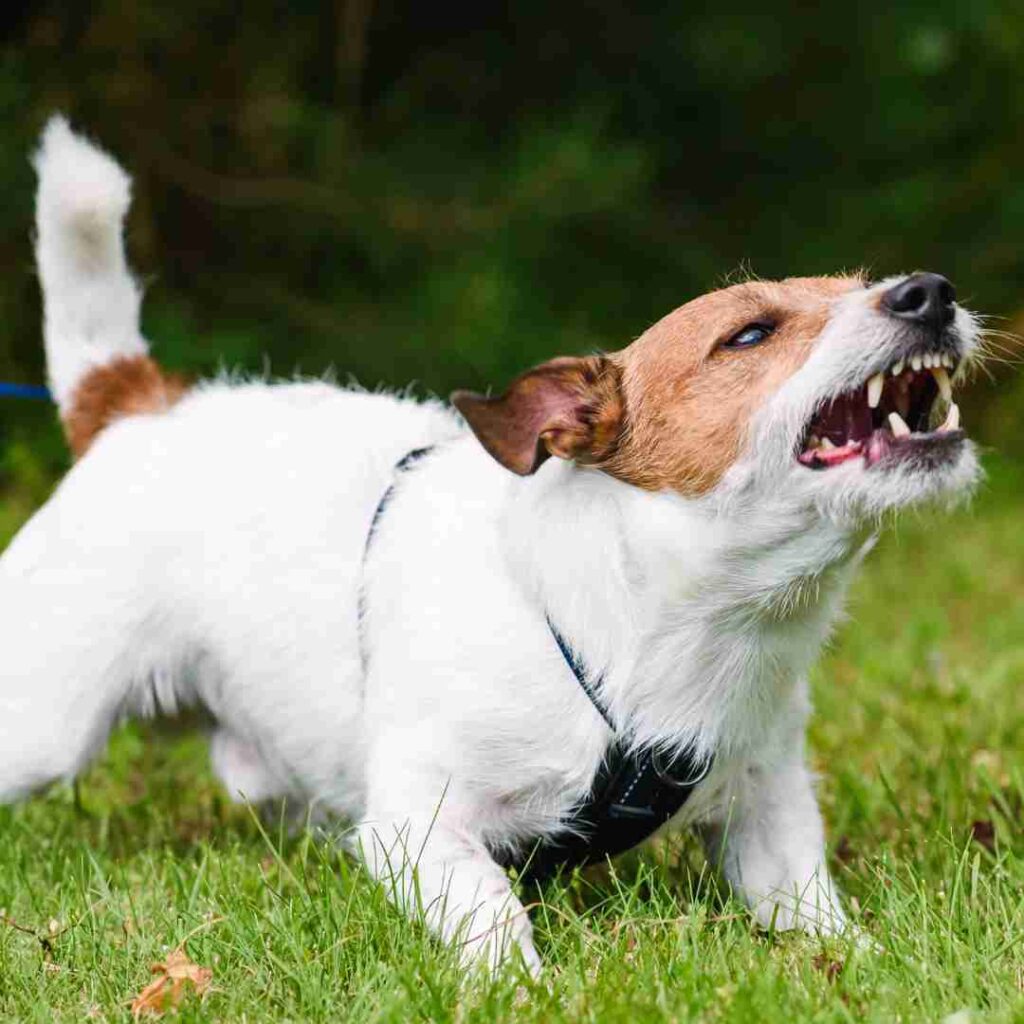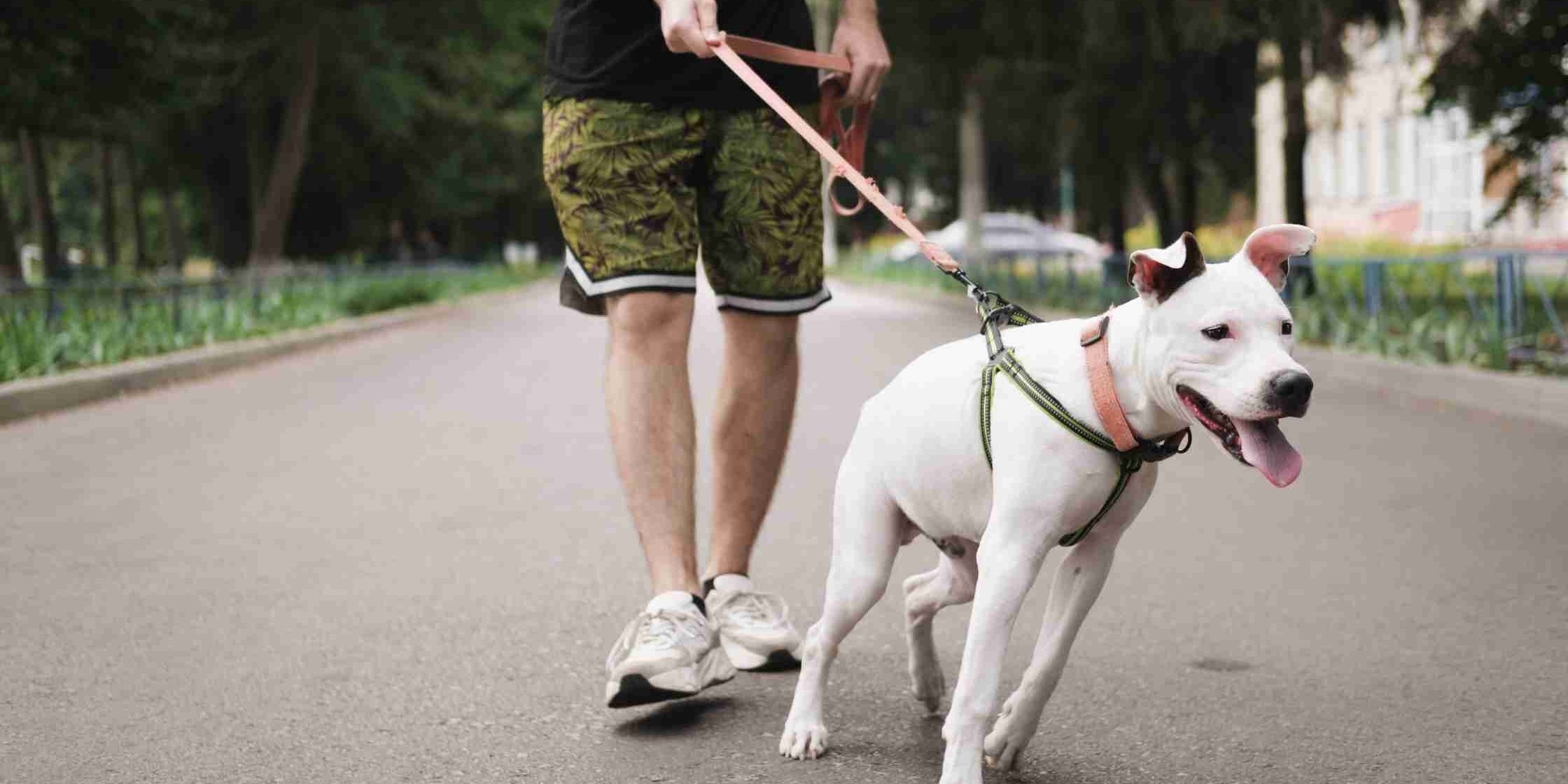Training a reactive dog can be a challenging, yet rewarding endeavor. When your furry companion reacts excessively to stimuli—perhaps barking, lunging, or showing signs of distress—it’s essential to understand that this behavior is often rooted in emotions like fear or anxiety.
By learning how to navigate your dog’s reactivity, you not only improve your dog’s well-being but also enhance your bond with your pet.
Grasping your dog’s reactivity begins with identifying what exactly triggers these outsized responses, such as other animals, strangers, or unfamiliar sounds.
Equipped with this knowledge, you create a foundation for training that seeks to transform these triggers from sources of stress to opportunities for positive experiences.
Remember, reactivity does not mean your dog is inherently difficult or aggressive. It’s simply a signal that your dog is in need of support and structured guidance.
Key Takeaways
- Understanding your dog’s triggers is the first step in training.
- Reactivity is an emotional response, not a sign of a “bad” dog.
- Structured guidance and support lead to positive experiences.
Understanding Reactivity in Dogs
When you notice your furry friend barking or lunging on the leash, you’re encountering the challenge of reactivity. Let’s take a closer look at what reactivity in dogs really means, the factors that play into it, and the signs that your dog might be showing.
Defining Reactivity and Its Common Triggers
Reactivity in dogs is essentially an overreaction to specific stimuli or triggers in their environment. It’s like your dog is flipping a switch from calm to overdrive in the blink of an eye.
Typically, common triggers can range from other dogs and people to cars, bikes, or even the sudden clatter of a dropped pan.
- Common Triggers include:
- Other animals
- Strangers
- Loud noises
- Moving vehicles
Think of it as your dog wearing a pair of metaphorical glasses that magnify stress into a bigger deal than it might actually be. It’s their way of saying, “Hey, this is too much for me!”
The Role of Genetics and Environment
Just like you might inherit your mom’s eyes or your dad’s sense of humor, your dog can inherit a tendency towards reactivity (it’s in the genes). But that’s not the whole picture; their environment plays a big role too.
Poor socialization or negative experiences can leave a lasting mark on your dog’s behavior.
Key factors include:
- Genetic predisposition
- Early life experiences
- Level of socialization
- Past traumas or bad experiences
It’s a classic nature versus nurture scenario, where both the genetic lottery and life’s lottery ticket play part in shaping your pup’s reactions.
Signs of Reactivity in Your Canine
Spotting the signs of reactivity in your dog can be pretty straightforward if you know what to look for.
Does your dog tense up, bark excessively, or try to run towards or away from certain things during walks? These reactions are red flags waving at you, saying that your dog might be struggling with reactivity.
Watch out for:
- Barking or growling
- Lunging or snapping
- Excessive panting or drooling
- Trying to hide or escape
Identifying these signs early on can be vital in helping your dog feel more at ease and ensuring your walks are enjoyable escapades rather than stressful sprints. Remember, it’s about reading the signs and understanding the language your dog is speaking, even if it’s not with words.
Foundational Training Techniques

When working with your reactive dog, establishing a robust foundation is critical. By focusing on the basics, you give your dog the tools they need to succeed and create a predictable environment that can alleviate stress and confusion. Let’s break down these core techniques to ensure a happier and more obedient furry friend.
Establishing Basic Commands and Routine
Your journey begins with consistency in training and daily life. Mastering commands such as sit, stay, and come creates a language between you and your dog that promotes understanding and comfort.
To do this, carve out specific times for training sessions that fit both your schedules (dogs are creatures of habit, after all).
This routine forms a framework that your dog can rely on, reducing the unpredictability that can lead to stress and reactivity.
Positive Reinforcement and Its Importance
Positive reinforcement is the heart of successful dog training; it’s about rewarding the behaviors you want to see (think treats, praises, or a favorite toy).
Every time your dog follows a command or remains calm in a situation where they’d typically react, make it rain happiness.
Your reaction to their good behavior encourages them to continue being good, as dogs inherently aim to please those they love.
It’s crucial for the treats to be irresistible (the doggie equivalent of chocolate cake) to make a lasting impression.
Managing Energy and Stress Levels
A tired dog is a happy dog. Incorporating daily exercise tailored to your dog’s needs can significantly decrease leash reactivity.
Mix in activities like fetch, tug-of-war, or long walks to help burn off that raw energy.
Stress in dogs often manifests as excessive energy, so finding outlets for their zest is akin to hitting the refresh button on a sluggish computer.
Remember, a dog that’s mentally and physically satisfied will be less likely to act out when faced with their usual triggers.
Addressing Specific Reactive Behaviors

When your beloved pup exhibits reactive behaviors like excessive barking or unanticipated lunging, it can be disheartening (and quite embarrassing on public walks, right?). But don’t fret! By employing specialized techniques, we can begin to turn those stressful walks into enjoyable outings for both you and your furry friend.
Dealing with Leash Reactivity
Leash reactivity can be a real test of patience when your peaceful walk turns into a tug-of-war. To tackle this, focus on creating positive associations with other dogs and people.
Start by increasing distance from the trigger to a point where your dog notices but doesn’t react (the “threshold”). Praise and treats work wonders here to reward calm behavior.
Remember, it’s all about baby steps and safety; a sturdy leash and a well-fitted harness are your best allies.
Leashes and Barriers:
- Leash: Use a no-slip harness to discourage pulling.
- Barriers: Practice behind fences or windows to create a buffer.
Tips:
- Always reward calm behavior with treats or play.
- Keep greetings (when ready) short and sweet.
Strategies for Reducing Aggression and Barking
Seeing your dog aggressive and barking can tug at your heartstrings, especially when you know they’re just scared.
Begin by identifying what flips your dog’s switch, whether it’s a specific sound or sight. Then, use behavior modification techniques to address the aggression.
It’s vital to ensure everyone’s safety, so consider consulting a professional to guide you through these delicate waters.
Safety First:
- Muzzle training, when done correctly, ensures safety for all.
- Seek professional help for tailored aggression management plans.
Balanced Behavior:
- Interrupt barking with a calm command, followed by a distraction.
- Consistency is key — same command, same tone, every time.
Counter-Conditioning and Desensitization
Counter-conditioning and desensitization might sound like heavy terms, but they’re essentially about changing your dog’s emotional response to the triggers that set off their reactive displays.
Break it down to a science: gradually expose your dog to the fear-inducing stimuli at a tolerable level (this could be as minor as the sound of another dog barking from afar), then immediately follow with high-value rewards – think chicken or cheese, for extra motivation.
Keep those sessions short and positive, painting a picture of a world that’s not so scary after all.
Techniques to Try:
- Slowly introduce the triggering stimuli at a low level.
- Pair it with a treat party to associate it with positive vibes.
Body Language Is Key:
- Monitor your own body language; stay relaxed and optimistic.
- Your calm demeanor tells Rover there’s nothing to fear.
Advanced Considerations and Professional Help
When you’ve tried the basics and your pup’s reactivity still looms large, it’s time to dig deeper. Understanding when to rop(e) in the pros, use nifty tools, or craft a robust game plan can turn the tide in your favor.
When to Seek Help from a Behaviorist
If you’re feeling like you’re spinning your wheels, then reaching out to a behaviorist might just be your next best step.
When your dog’s reactions are more than you can fathom, or if you’ve noticed no improvement despite your valiant efforts, a professional dog trainer with a specialty in behavior can provide insight grounded in your dog’s unique history and personality.
The Use of Specialized Training Tools
Sometimes, all you need is a little boost from the right gadget.
Specialized training tools—think harnesses that gently guide or treats that grab their unflinching attention—can be a godsend.
Yet, it’s crucial to understand the how and why behind each tool, keeping your dog’s comfort (and trust in you) at the forefront.
Creating a Long-term Management Plan
Crafting a durable management plan is like piecing together a puzzle; it requires patience and precision.
Key elements such as establishing a predictable routine, setting clear cues, and maintaining consistency will be the scaffolding of your success.
Ensuring your plan aligns with your lifestyle is vital—this isn’t a one-size-fits-all approach but rather a tailored suit that fits just right.
Frequently Asked Questions
In this section, you’ll find answers to common queries about managing and training your reactive dog, breaking down the journey into manageable steps.
How can I socialize my reactive dog effectively?
It’s essential to socialize your reactive dog gradually.
You can start by exposing them to new environments and other dogs from a safe distance. Positive reinforcement is crucial; rewarding your dog for calm behavior helps build confidence.
Visiting pet socialization spots may offer controlled environments for practice.
What techniques can help calm a reactive dog during walks?
To calm your reactive dog during walks, use techniques like the “U-turn” to walk away from potential triggers or the “look at that” game to reward non-reactive behavior.
Carrying treats or toys can redirect focus and reward composure. You might find the “heel” position useful, as detailed in specific training guides.
Are there some methods to train a reactive dog successfully at home?
Yes, you can train your reactive dog at home using structured activities that focus on obedience and impulse control, like sit-stay or leave it.
Consistent, short training sessions can lead to significant improvements. Implementing a routine and structure at home also helps your dog feel secure and less prone to react.
Is it possible to completely train reactivity out of a dog?
Training can significantly reduce reactivity. However, it’s not always possible to completely eradicate it, especially if it’s rooted in the dog’s temperament or past experiences. With patience and training, you can achieve a dramatic reduction in reactive episodes, leading to a more harmonious relationship with your furry friend.
What are some common mistakes to avoid when dealing with a reactive dog?
Common mistakes include punishing the dog for its reactive behavior, which can heighten anxiety, or unintentionally reinforcing the behavior by comforting them when they react. Always avoid exposing your dog to overwhelming situations too quickly. Remember, patience and consistency are key components to progress—overreacting can backfire.
What steps should I take to reduce my dog’s reactivity over time?
Reduce your dog’s reactivity by gradually introducing it to various triggers at a comfortable distance.
Make sure to work at your dog’s pace and keep training sessions positive and stress-free.
Reinforcing calm behavior with treats or play can be beneficial.
Consulting a professional dog trainer may provide personalized strategies to further aid in reducing your dog’s reactivity.






